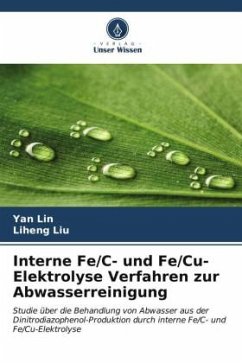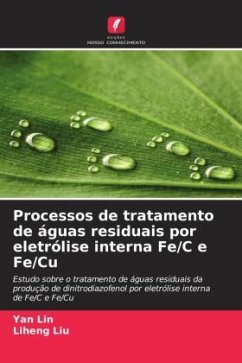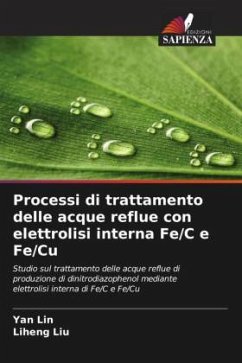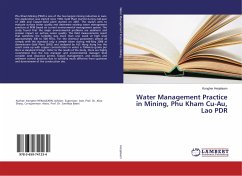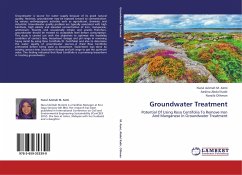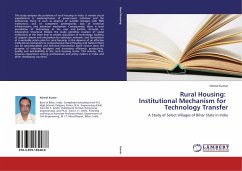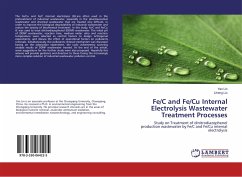
Fe/C and Fe/Cu Internal Electrolysis Wastewater Treatment Processes
Study on Treatment of dinitrodiazophenol production wastewater by Fe/C and Fe/Cu internal electrolysis
Versandkostenfrei!
Versandfertig in 6-10 Tagen
16,99 €
inkl. MwSt.

PAYBACK Punkte
8 °P sammeln!
The Fe/Cu and Fe/C internal electrolysis (IE) are often used in the pretreatment of industrial wastewater, especially in the pharmaceutical wastewater and chemical wastewater that are treated very difficult, in order to improve the biological degradability of industrial wastewater and reduce the toxicity of biochemical treatment. In this study, Fe/C and Fe/Cu IE was used to treat dinitrodiazophenol (DDNP) wastewater. The initial pH of DDNP wastewater, reaction time, medium molar ratio and reaction temperature were selected as control factors to design orthogonal experiments, and discuss the ef...
The Fe/Cu and Fe/C internal electrolysis (IE) are often used in the pretreatment of industrial wastewater, especially in the pharmaceutical wastewater and chemical wastewater that are treated very difficult, in order to improve the biological degradability of industrial wastewater and reduce the toxicity of biochemical treatment. In this study, Fe/C and Fe/Cu IE was used to treat dinitrodiazophenol (DDNP) wastewater. The initial pH of DDNP wastewater, reaction time, medium molar ratio and reaction temperature were selected as control factors to design orthogonal experiments, and discuss the effect of operational factors on pollutants removals. Simultaneously, the pollutants removal mechanism was discussed basing on the adsorption experiment, the cyclic voltammetry scanning analysis results of DDNP wastewater treated. At the end of the article, some suggestions for the further study were also proposed. Hopefully this volume will provide guidance and direction to those facing the increasingly more complex solution of industrial wastewater pollution control.




